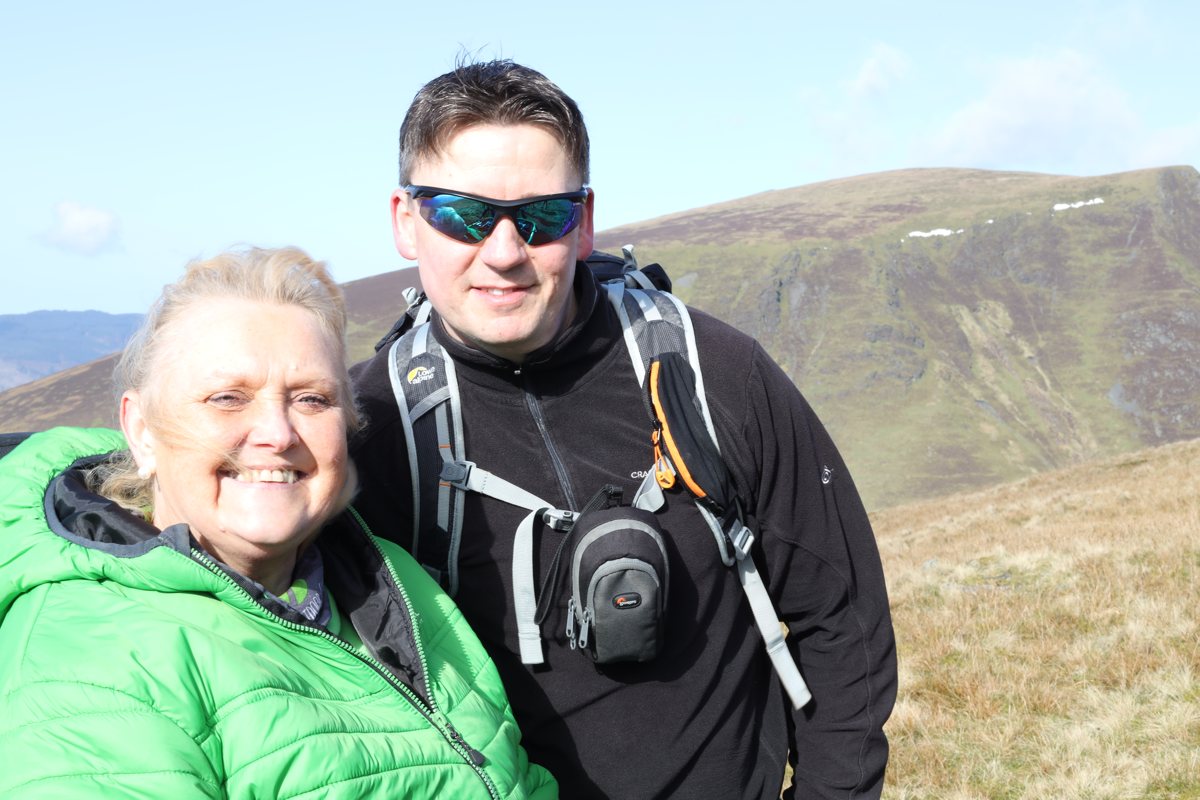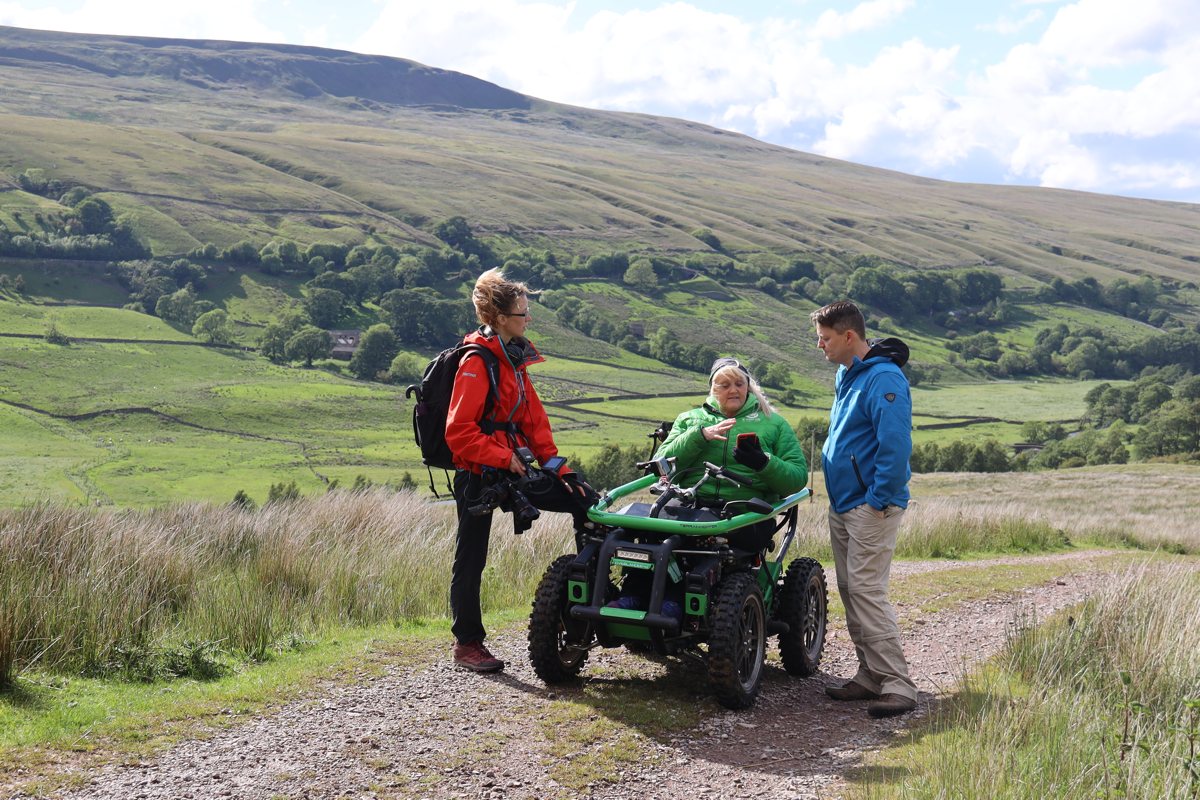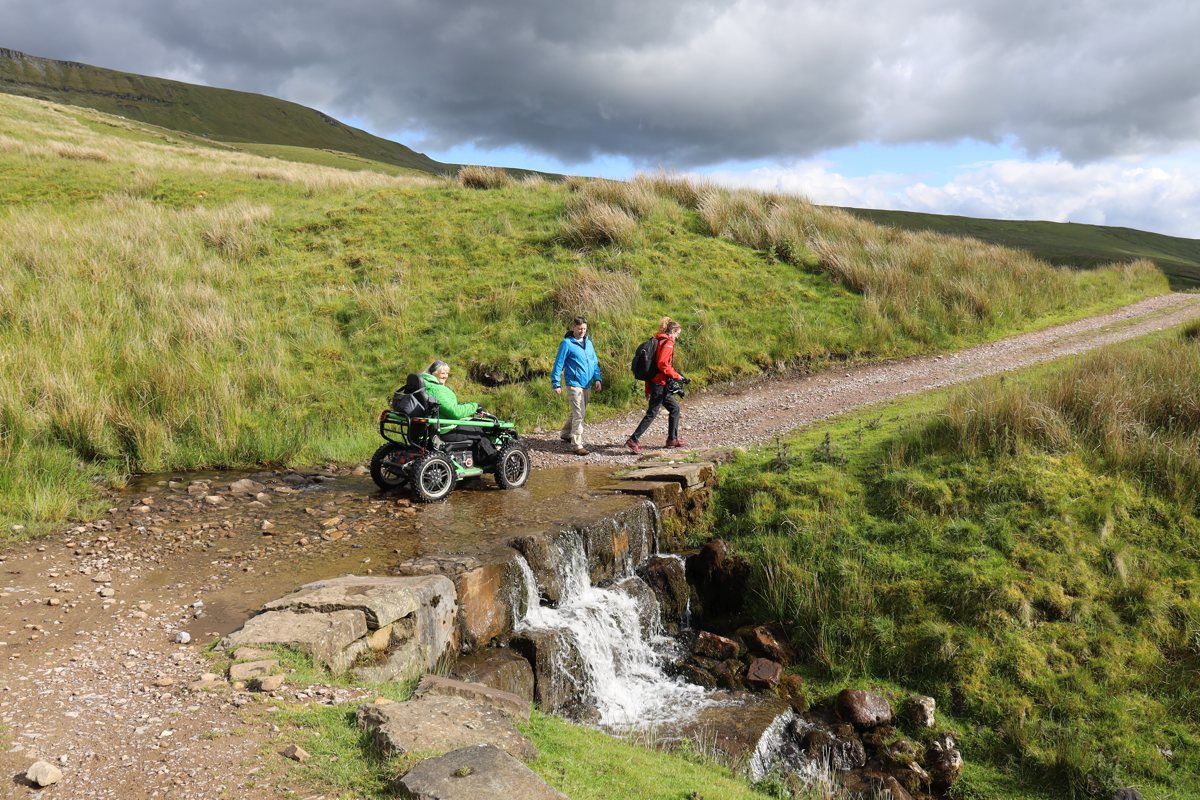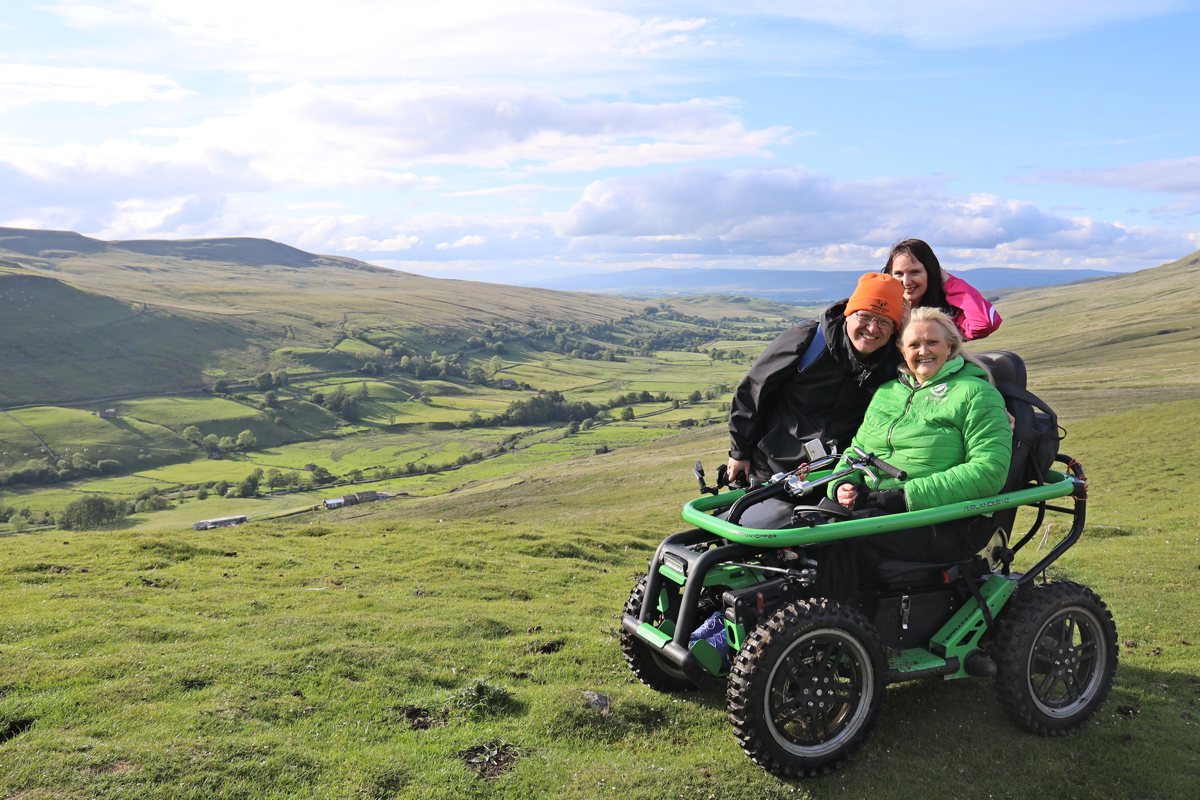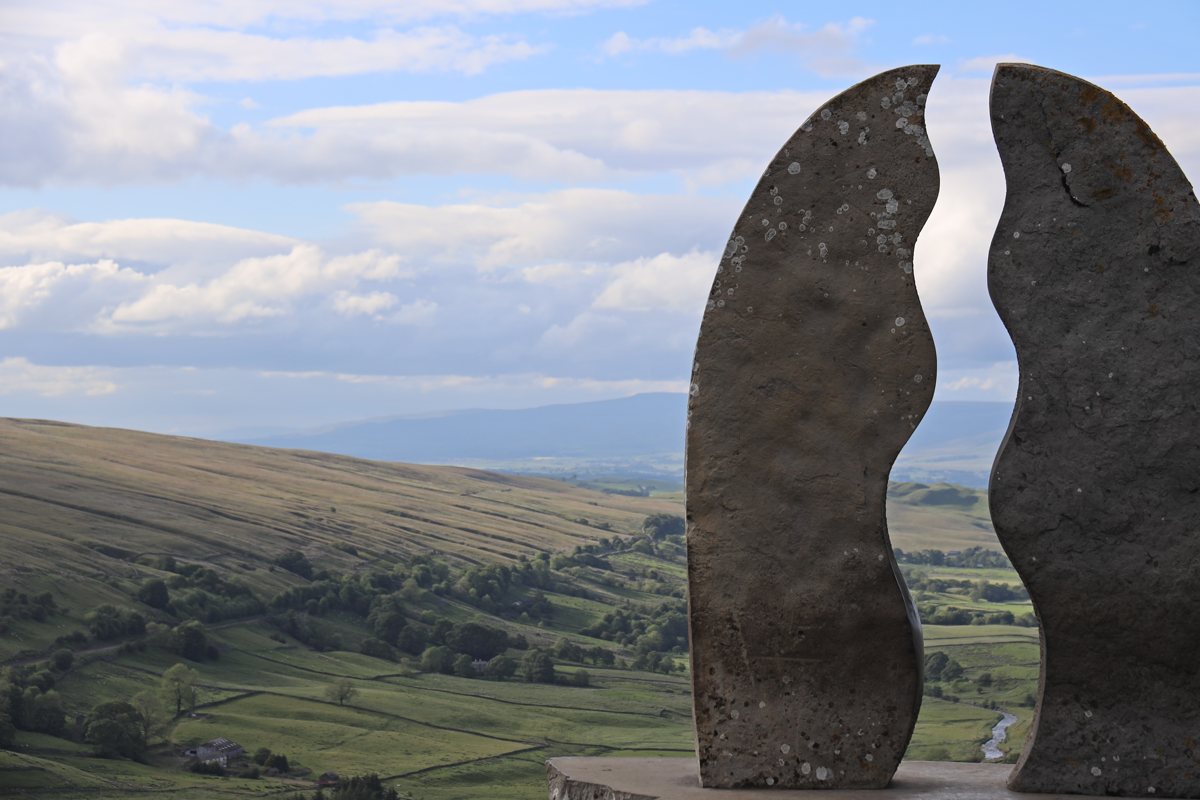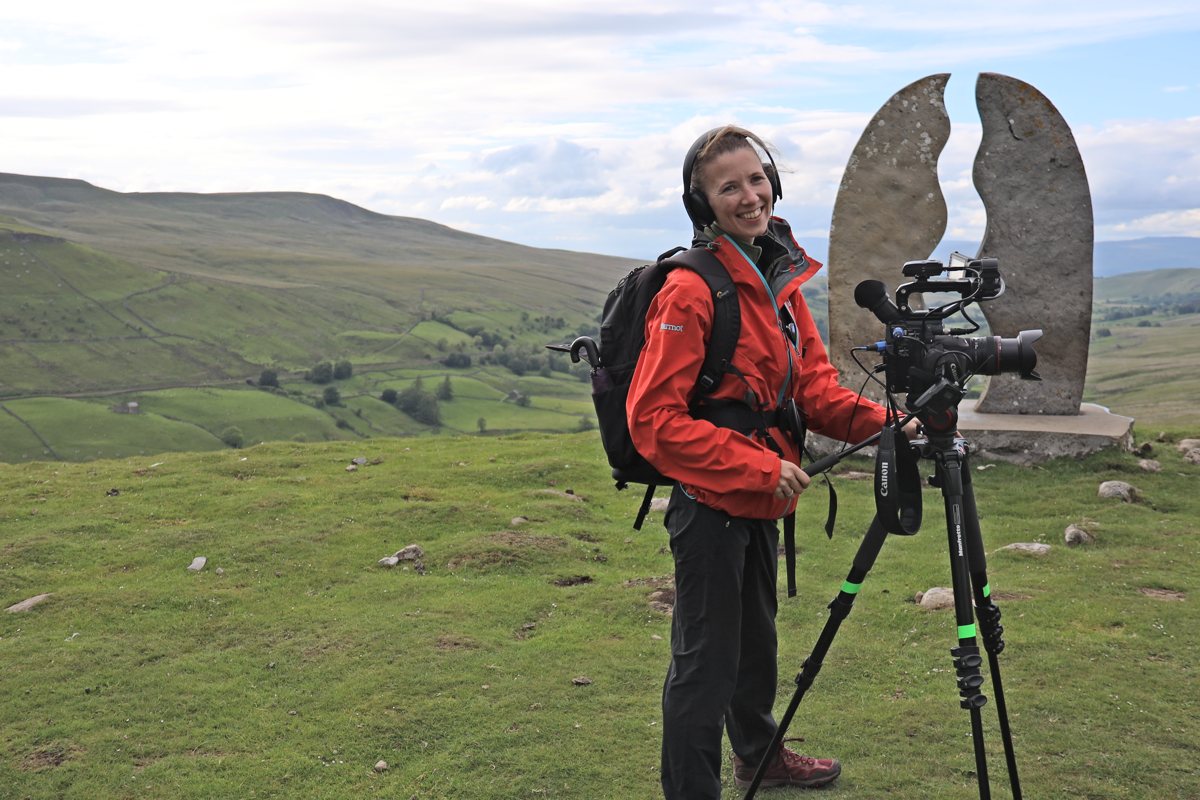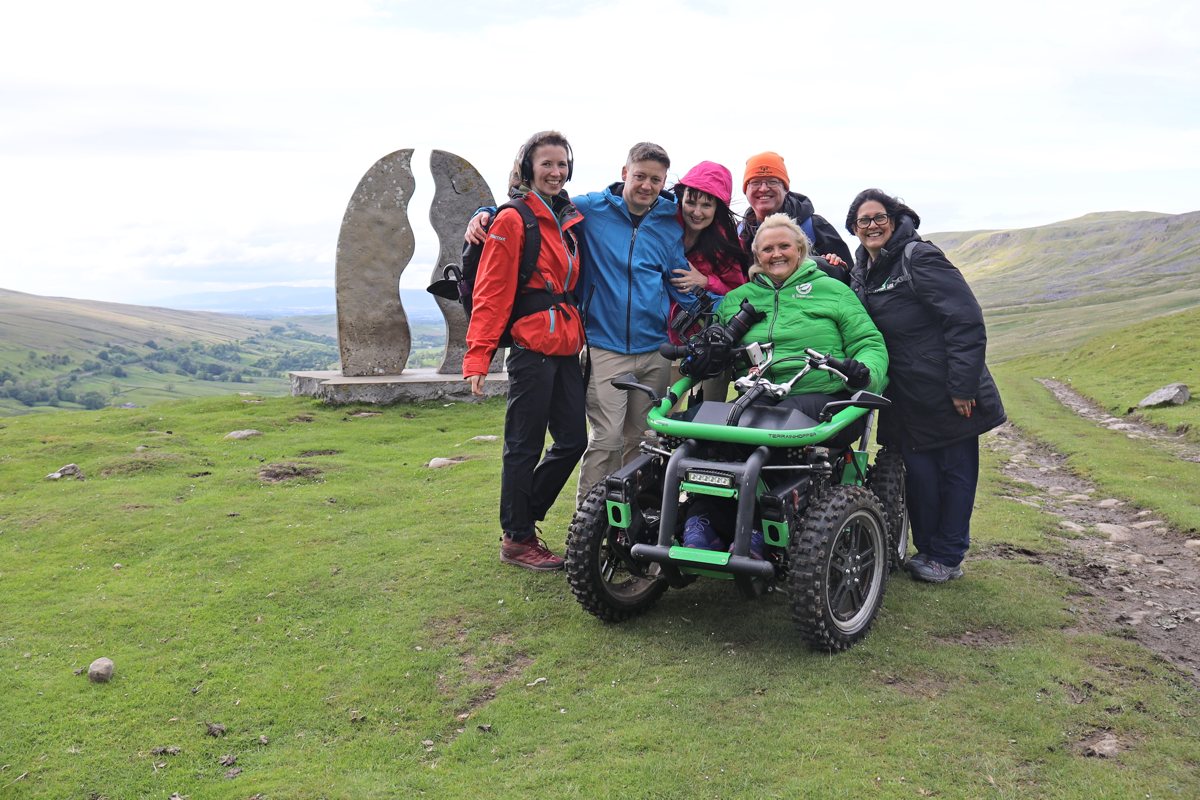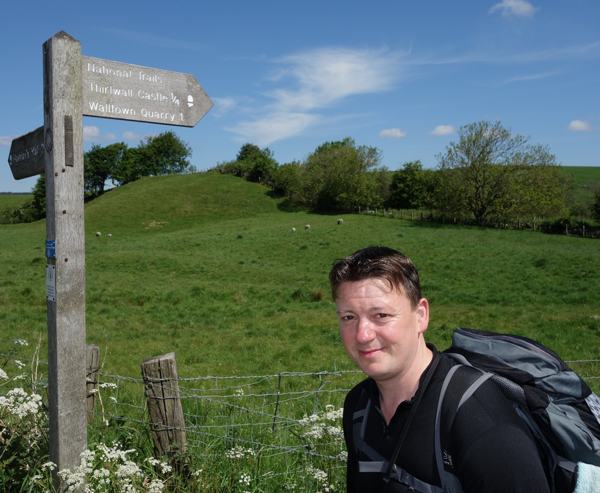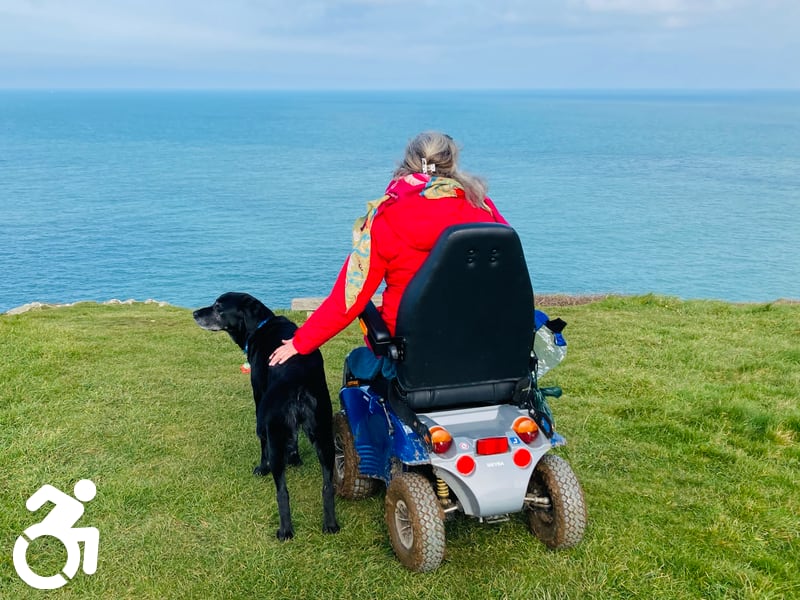I had the great pleasure of meeting up with Chris Butterfield, collector of all things to do with Alfred Wainwright. We met up one Sunday afternoon and went for a short walk from Thrang, Mallerstang, Cumbria up to the Water Cut, which is a small section of ‘A Pennine Journey – from Settle to Hadrian’s Wall in Wainwright’s Footsteps’.
It was on this walk that I was able to find out from Chris more about this long-distance walk which Wainwright completed in 1938 which was revised by keen walker and writer David Pitt in 2010.
‘A Pennine Journey – The Story of a Long Walk in 1938’ was the manuscript that Alfred Wainwright wrote as he walked the quiet country lanes and roads of the Northern England in 1938. It is presented exactly as it was written all those years earlier.
‘A Pennine Journey – The Story of a Long Walk in 1938’ is not just a story of one man’s walk in the Pennine District of England; it is a piece of history – a snap of people’s lives. “Alfred Wainwright had a very distinctive style of writing.” Chris explained, ‘‘He was a ‘Man of his times’. His views on people and their lives could be considered very controversial today.” Chris went on to explain the Wainwright never moved with times and never embrace change and even when he was compiling the original Lakeland guides, he was witnessing the changes and yearned for the old days.
In the Autumn of 1938, aged 31 years old, Wainwright was working as a clerk in the borough treasurer’s department at Blackburn Town Hall. Like everyone else, in Great Britain, Wainwright was apprehensive about the war. Chris explained that in a transcript of a conversation between Wainwright and Richard Else (who was the original producer of the Wainwright programmes that were made for TV) Wainwright described himself as ‘a useless solider’ and confessed that he wasn’t very practical. To escape the doom and gloom of war, Wainwright sought solitude of the Pennine landscape.
With two weeks away from work, Wainwright planned a circular walk from Settle, in North Yorkshire to Hadrian’s Wall, Northumberland. In 1938 paths across the countryside were only open to the landed gentry. It was not until the 1949 National Parks and Access to the Countryside Act was passed by Parliament that the hills and open moorland accessible to the common man. The first, and most important, factor in Wainwright’s route in 1938 was that he followed country roads which, at that time in history, were relatively free from vehicles This made it possible for safe walking and, as a consequence, enabled long distances to be covered relatively quickly.
For this walk, like so many he had done for previous walks, Wainwright made very detailed notes about what he saw and about the people he met along the route. Lawrence Wolstenholme, a work colleague from Blackburn, received several hand drawn postcards from Wainwright throughout his journey. Together with a sketch of a view, Wainwright gave Wolstenholme an update of the weather and a brief insight into how Wainwright was feeling during his long-distance walk. On the postcards he drew simple maps of his progress as he headed towards the Roman wall.
On his return from his solo walk of around 211 miles, which he completed in 11 days in appalling weather, he complied the manuscript which he intended to call ‘A Pennine Campaign’. However, when this work was complete Wainwright decided against publication and the manuscript of this walk remained hidden in a drawer for nearly 50 years. This walk was forgotten about and never mentioned. Chris explained, “No-one knows why, maybe it was the timing of the walk – a reminder of the war and times of difficulty for the country, but this manuscript was dismissed by Wainwright.” It had been suggested at one time that he tried to get it published but got knocked back by a publisher.
In 1968 Alfred Wainwright’s ‘The Pennine Way Companion’ was published. In 1985, Wainwright used material from that book as basis for a collaboration with photographer Derry Brabbs, to write ‘Wainwright on the Pennine Way’. It was during this time that Wainwright was reminded about his 1938 circular walk to Hadrian’s wall decades earlier (several ‘coffee table’ books were published during the mid-80’s by publisher Michael Joseph). Wainwright showed the near 50-year-old manuscript to editor Jenny Dereham. Jenny read Wainwright’s travel log of his walk and was fascinated by the route and the story that he told of his journey. She persuaded Wainwright to publish the original manuscript.
In 1986 ‘A Pennine Journey – The Story of a Long Walk in 1938’ was published exactly as it was written all those years earlier. This was the original narrative about his journey. He didn’t write it as a route guide for people to follow. It was the story of his walk, the people that he met, the place he visited and nature and landscape that he witnessed. It was never intended a long-distance route for fellow hikers. It was not a guidebook. It was a walk of peace and solitude – and an escape of the talk of war.
Words from Chris Butterfield:
“Having planned many long distant walks myself, I found the preparation to be almost harder than the walk itself. I admired Wainwright for simply heading off on this incredible journey with just the clothes on his back. His rucksack contained the barest of essentials and at one point, he almost regretted taking it. On some days he didn’t eat a thing until the evening, and no accommodation was booked in advance.
Wainwright’s writing is so beautifully descriptive and poetic, and I found myself absorbed by his every word. The events throughout his walk are described in such a dramatic way, that Wordsworth himself would have been impressed by this young man’s way of expression. Some of his opinions on gender are not as politically correct as todays as some of his views are quite shocking. However, he does give great praise to people of both sexes that were kind to him. On one occasion, Wainwright generously bought a box of chocolates for a young girl who had simply guided him to his lodgings.
Wainwright’s love of maps is very apparent early in the book. He opens chapter three with a beautiful homage to them. This beautiful paragraph is one of many highlights that stood out to me.
Snippets of news regarding the impending war were present throughout his journey, but he could always rely on his imaginary girl to soothe him and tuck him up in bed every night. Was this an insight to his unhappy marriage, and his desire to escape it?
His return from the Wall to Settle was an anti-climax for Wainwright. He felt that the pinnacle of his journey had been reached at the Wall, and he had even considered returning home by train. Many of his photos were also ruined which didn’t help. He persevered through his negative thoughts and ploughed on, despite being battered into submission by poor weather almost daily.
A Pennine Journey is a great insight into the mind of a flawed genius, who would go on to achieve greater things. His book does a magnificent job in transporting you to the North of England during a time when life seemed a lot simpler.”
In late 1991 David and Heather Pitt were contemplating what was to be their next long-distance footpath.
David and Heather were no strangers to long distance walking. In 1978 they walked Wainwright’s Coast to Coast and became interested in other long distance walks that Wainwright had written about.
They had read ‘A Pennine Journey – The Story of a Long Walk in 1938’ and had traced the walk, linking up many of the places Wainwright visited on a modern-day map.
They quickly realised that Wainwright’s quiet country lanes were now busy roads. In 1998 Heather and David decided to follow the walk, devising their own route away from the traffic and using public rights of way and existing rights of way.
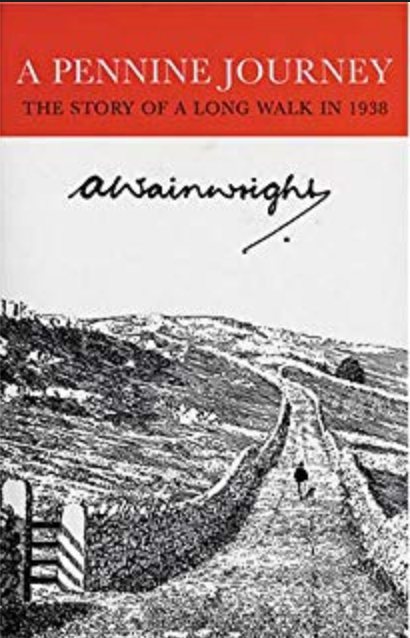
Their key objective was to make it a long-distance walk that could be split into manageable sections that had suitable accommodation available at the end of each section.
David and Heather Pitt walked ‘A Pennine Journey”. Their aspiration for this long-distance trail was published in 2010 by Frances Lincoln and is now in its second edition.
‘A Pennine Journey- A Walk from Settle to Hadrian’s Wall in Wainwright’s Footsteps’ a 247miles circular walk is slowly approaching its tenth anniversary. Ron Scholes, a retired headteacher and a good friend of Wainwright, produced the maps for the book whilst Colin Bywater, keen walker, climber and artist, provided the artwork.
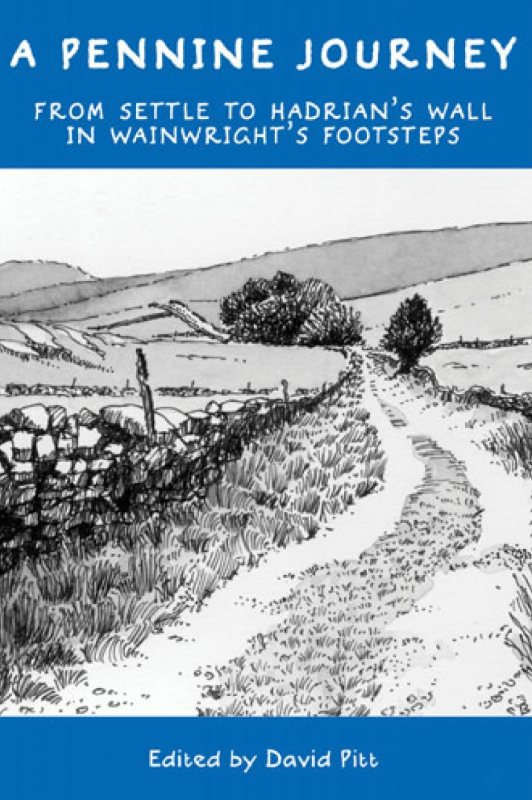
The book divides the walk into 18 daily stages of varying length and offers a choice of possibilities. It can be undertaken as one continuous walk or split into two stages of roughly 120 miles. The first stage would finish at Housesteads on Hadrian’s Wall.
The revised route of A Pennine Journey starts in Settle, a market town in the Yorkshire Dales. The first day’s walk is from Settle to Horton in Ribblesdale, the home of Pen-y- Ghent. This is where Wainwright had sent his first pre-drawn postcard of the church at Horton-in-Ribblesdale and of Pen-y-Ghent to his friend Lawrence.
Wainwright walked much further each day than David and Heather suggest in their revised version of the walk. We know that Wainwright didn’t stop in Horton-in-Ribblesdale but continued onto Buckden.
By the end of Wainwright’s third day, he had arrived in Barnard Castle. Even following the route established by David and Heather Pitt, the third day is a long 17 miles, finishing in Gunnerside.
By Day five Wainwright had arrived in Hexham. Thankfully David gives us a route of a much more relaxed pace arriving in Hexham by day eight. By this time Wainwright was three days ahead of the revised version written by David and Heather.
Wainwright’s next postcard was sent on Day 11 from Dent and another from Ingleton. He was now on his return journey from Hadrian’s Wall. It’s very clear from his writing that Wainwright had much rain.
The 29th September 2018 marked the 80 Anniversary of the origin walk that Wainwright made. To mark the anniversary, various organisations and charities planned to walk the entire 247-mile journey in one day. Each group/organisation or individual hiker was given a section of the walk to complete and it was intended that money raised during this long-distance sponsored walk would go to the various charities involved.
Andy and I walk planned to walk the section on from Thrang to Gardale Head, which is on bridleway. Unfortunately, the narrowness of the track at Keld Gill made it impassable for me in the TerrainHopper, so my journey came to an end, but Andy continued to complete our section. However, I did get to witness the stunning views over the Wild Boar Fell and get up close to the monument at the Water Cut before I had to turn back.
Chris and Priscilla walked from Hexham to Steeltrigg, via Hadrians wall.
“My wife Priscilla and I chose the Hadrian’s Wall section, which is a favourite location of ours. We were combining two sections in a day, which was almost 20 miles in total. We made an early start in Hexham with fine weather to greet us.
It wasn’t long until we saw our first glimpse of the Wall at Planetrees, which is a 15-metre section of Wall. Soon after, we were greeted by the magnificent Black Carts Turret. The entire section of Wall here, runs for 460 metres. This magnificent section of the Wall was a hint of things to come. This was a perfect stop for a snack and photographs.
We started to hit higher ground and we were slowly becoming more exposed to the elements. The wind was quite strong now, but beautiful views were our reward as we crossed High Teppermoor. We soon arrived at Brocolitia Roman Fort. The path skirted round the Fort and Soon after, we arrived at the Temple of Mithras, where we stopped to admire this beautiful site. Mithras was an eastern god who, had captured and slain the primeval bull in a cave, which Mithraic temples, were intended to evoke.
The journey ahead was easy, but exposed. The winds were quite ferocious now and we were walking with our heads down. We passed several Milecastles and Turrets, and eventually we saw the spectacular Broomlee Lough in the distance. The path slowly descended until we soon came to the famous Housesteads Roman Fort which was the highlight of the day.
The fort was built in stone around AD 124, soon after the construction of the wall began. Its has been given various names such as Vercovicium, Borcovicus, Borcovicium, and Velurtion. The name of the 18th-century farmhouse of Housesteads gives the modern name.
Our route forward took us over Hotbank Crags, and we were sheltered within trees in this beautiful section. After a short time, the trees thinned out and we were rewarded with a glorious view of Crag Lough below Highshield Crags. One of the highlights of this final section is Sycamore Gap, where Robin Hood – Prince of Thieves was filmed. This location was chosen by the film producers whilst scouting the area in 1990.
After climbing out of the dip, the walk takes you over Peel Crags, before descending to the main road and down to Once Brewed. It was a long day but a thoroughly enjoyable one. It was great to walk the section that was to be Wainwright’s ultimate destination back in 1938, and it comes highly recommended on a fine day.”
So, what is the future of ‘A Pennine Journey’?
Following the publication of the revised book, a group of dedicated followers of the Pennine Journey formed ‘The Pennine Journey Supporters Club’ (PJSC). The main objective and core purpose of the club is to promote and support the Pennine Journey as long-distance trail so that this tribute to Alfred Wainwright become permanent. The PJSC is now recognised by the appropriate highway authorities as the ‘Responsible Organisation’ for the Pennine Journey.
Last year at their AGM, Chris was approached by David Pitt to take a more active role on the committee of the PJSC, as David was retiring from Chairman. Chris has taken up the reins as Chairman of the club and he has committed to promoting this revised walk of Wainwright’s original’ A Pennine Journey’ with the goal to getting it recognised with National Trail Status and to making it as popular Wainwright’s Coast to Coast walk.
So far in its journey to become a National Trail the entire walk is waymarked by the blue PJ logo and the walk is now recognised on OS maps. In 2019 Route Coordinator, Robert Cullen, plotted the entire route on Viewranger and downloadable GPX route files and maps are now available for the walk.
Baggage transfer companies are now promoting the walk and through social media the walk is becoming more popular. The route is being promoted internationally in Australia by a travel company.
The walk is a great adventure to do, whether as a complete long-distance walk or as a walk divided into smaller sections.
Meeting up with Chris has given me inspiration to find out more about this walk and hopefully we will be able to plan a wheelchair accessible version of A Pennine Journey. Now what would Alfred Wainwright made of that plan! Wheely Wainwright Walks!


